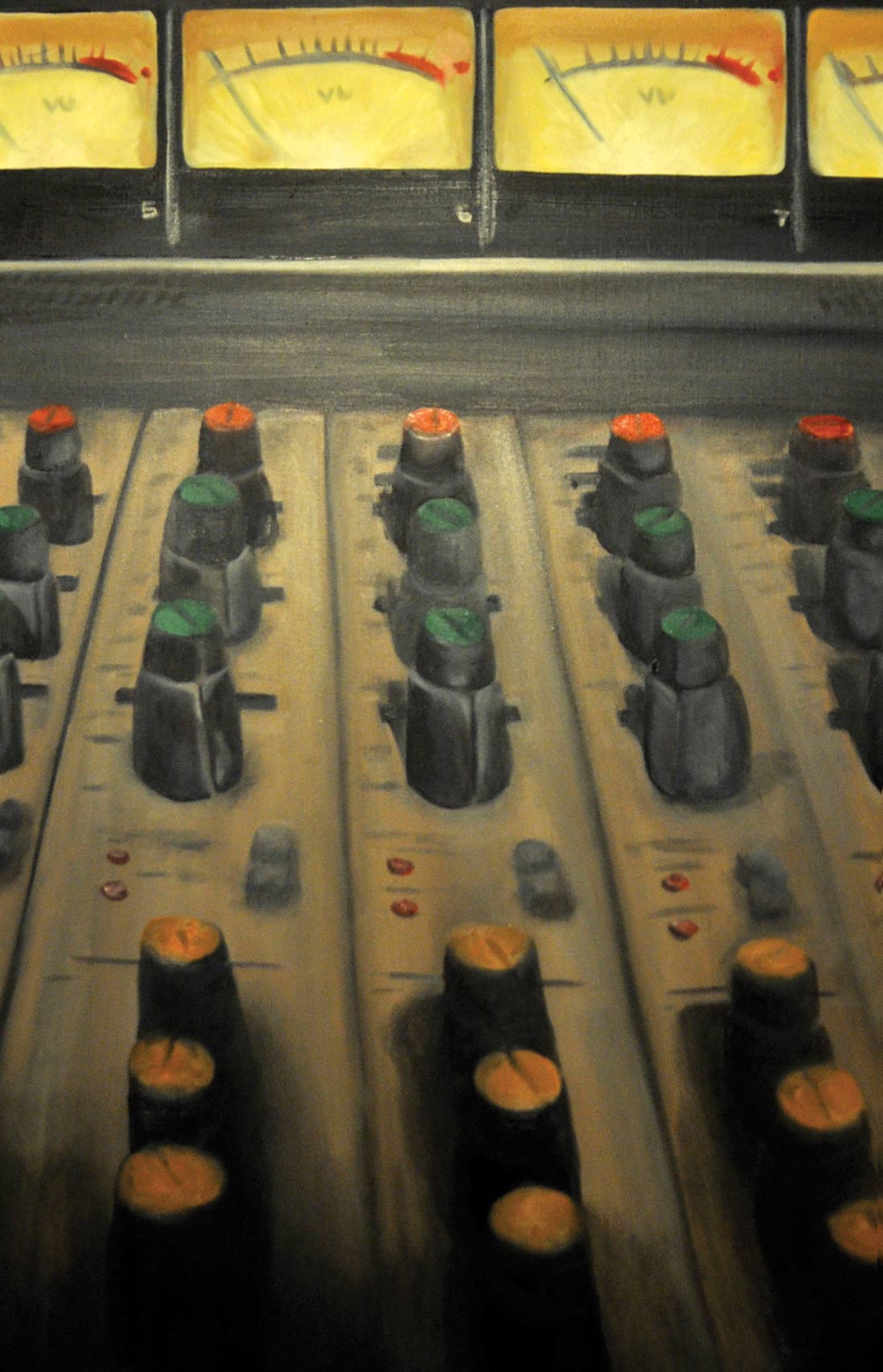After cutting his teeth racking vintage channel modules, David Marquette has augmented his craft with meticulous re- creations of - and "tips of the hat" to - classic outboard gear. I've reviewed a few of his Mercury devices in the past, being particularly blown away by the Fairchild-esque Mercury 66 Studio Limiting Amplifier [Tape Op #49], and even torturing my credit card when I happily purchased Mercury's take on a Pultec, the wonderful Mercury EQ-P1 Studio Program Equalizer [#49]. So be warned, this review may be slightly biased, as I am indeed a fan of David Marquette's Mercury Recording Equipment line.
One of Mercury's latest offerings, the Grand PreQ15s, is a channel strip based on the 1970s-era Calrec PQ15s input channel. Not familiar with Calrec? Well, the British company has been around for quite some time, specializing nowadays in broadcast equipment which is used all over the world in most, if not all, BBC locations, as well as TV stations and mobile trucks here in the USA. But back in the early '70s, Calrec audio consoles were made to BBC spec and commissioned for BBC broadcast or recording installations to compete directly with Neve, and were every bit as well-designed and constructed - though sonically of a slightly different color palette. Most engineers familiar with both Neve and Calrec would agree that each shares a "thick" and "substantial" sound, suited to all types of music and excelling at rock. They'd also agree that Calrec tends to have a clearer, "silkier" top end. In my experience, I would agree; my studio has a 1970s-era Neve console, and I have used Calrec PQ15s at various other studios over the years.
I recently checked out the Grand PreQ15s during sessions and subjective comparison tests at Verdant Studio. I was not able to do a direct comparison to an original Calrec but found it very interesting to A/B the Grand PreQ15s with Verdant's Neve 33114 channels. Running mic'ed signal as well as prerecorded tracks through both signal paths yielded unsurprising results: beefy sounds with well-defined lower mids; smooth and musical EQ; and the unmistakable "sound of iron." Electric guitars and drums tended to sound similarly awesome going through each device. Acoustic guitars and vocals, however, were a bit different. To my ears, the Neve modules tended to "soften" some of the ultra-top end of these sounds - a nice thing, as it's a pleasant, not by any means muddy, softness. But the Mercury sounded like it actually enhanced the very high harmonics on these delicate sounds - also a nice thing, but just a bit different.
As with all the Mercury gear I have encountered, the build quality is superb. Nice, heavy-gauge housing, high-grade components, and not at all chintzy. The front panel features knobs of various vivid colors, reminiscent of the Calrecs of yore, and a look under the hood revealed beautifully organized hand-wiring and layout. The LEDs for phantom power, polarity, and EQ in/out are of the very bright variety - convenient for folks who like to keep their sunglasses on in the studio. The power supply is separate, connected by a 5-pin XLR cable. Input gain is in generous 12 dB steps, and there is a handy, sweepable, fine-gain knob, as well as an output-level knob. The selectable frequencies in the EQ section are generally similar to the BBC specified frequencies that were also employed by Neve, but I was a little dismayed to discover the midrange (called presence on the Grand PreQ15s in homage to the original Calrec nomenclature), has 350 and 700 Hz controls, but surprisingly no 500-ish frequency like the Neve's very handy 560 Hz. This is an omission that could be annoying for some when EQ'ing certain material such as kick drums and floor toms. When asked, Marquette explained that on the original Calrec PQ15s, there was no 350 Hz; it stopped at 700 Hz and the next position was off. The Grand PreQ15s prototype was used by Foo Fighters, who suggested 350 Hz specifically to help with drums. (In house, it's called the "Foo Mod.")
Interestingly, the low and high-pass filters work independently of the EQ section. Maybe I'm lazy, but I like the convenience of a switch that bypasses all EQ and filtering. On more than one occasion during my test runs, I bypassed the EQ and wondered why my signal was thin. Yes, I had left the high- pass filter set to 100 Hz. Not a big deal, but something for people like me to stay aware of! On the original Calrec, the filters were also not part of the EQ circuit, with the reasoning that you can use the filters without engaging the EQ section (which adds more amplifiers circuits and possibly amp noise).
All in all, the Grand PreQ15s is a lovely thing. Having a pair of them (or... an entire desk?!) would be heavenly. Naturally, the purchase price reflects the quality and begs the question, "Does the world need another high quality, expensive, Neve- esque channel strip?" I myself don't have an answer; all I know is that if I had one of these in my rack, I would likely use it on every session. David Marquette's answer? David replied, "There is the Neve 1084 and Calrec PQ15s, which are very similar. Neve 1073 and Calrec PQ14 also are very similar. Neve 33114, Calrec 1161, Audix 35102 - all very similar. Neve 33115, Calrec 1061 too - these are also similar and all BBC spec. The common thread is the BBC. No one copied Neve. Neve and the others designed and delivered to the BBC spec. Being lucky enough to work with this stuff for 19 years - listening to them side-by-side - the Calrec PQ15s stands above them all in my opinion. Thus, the effort to bring this product to market in a cluster of similar products."




_disp_horizontal_bw.jpg)